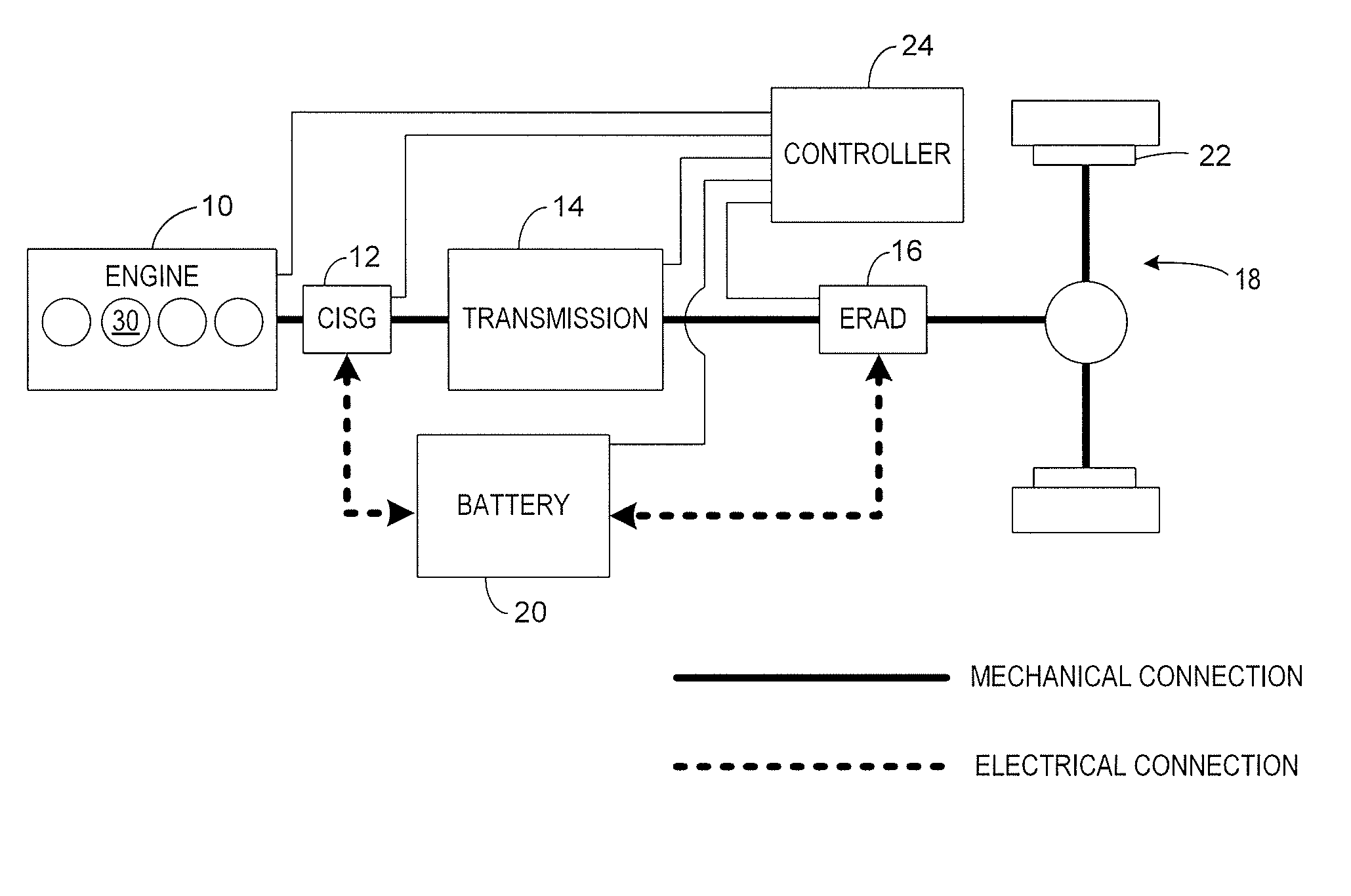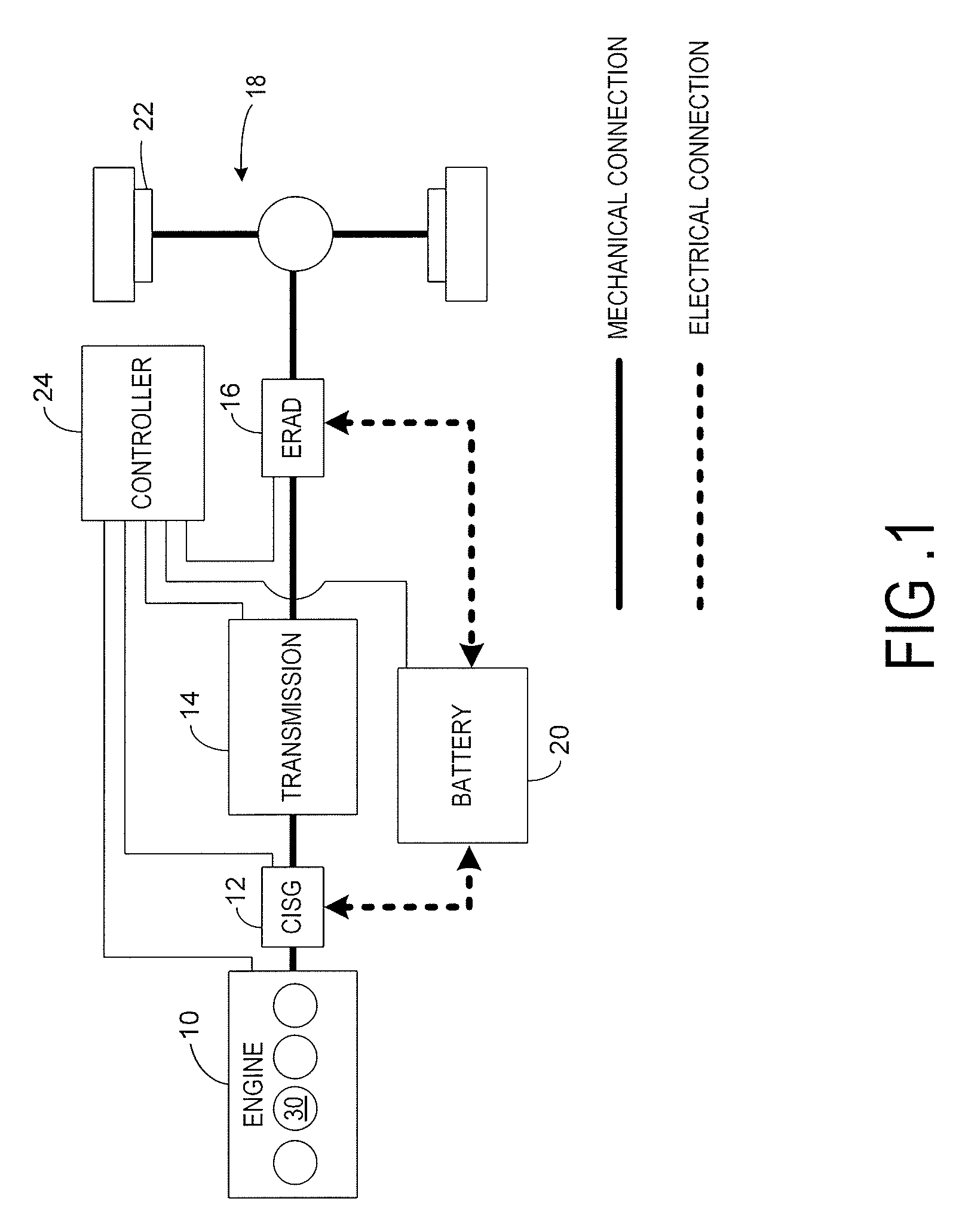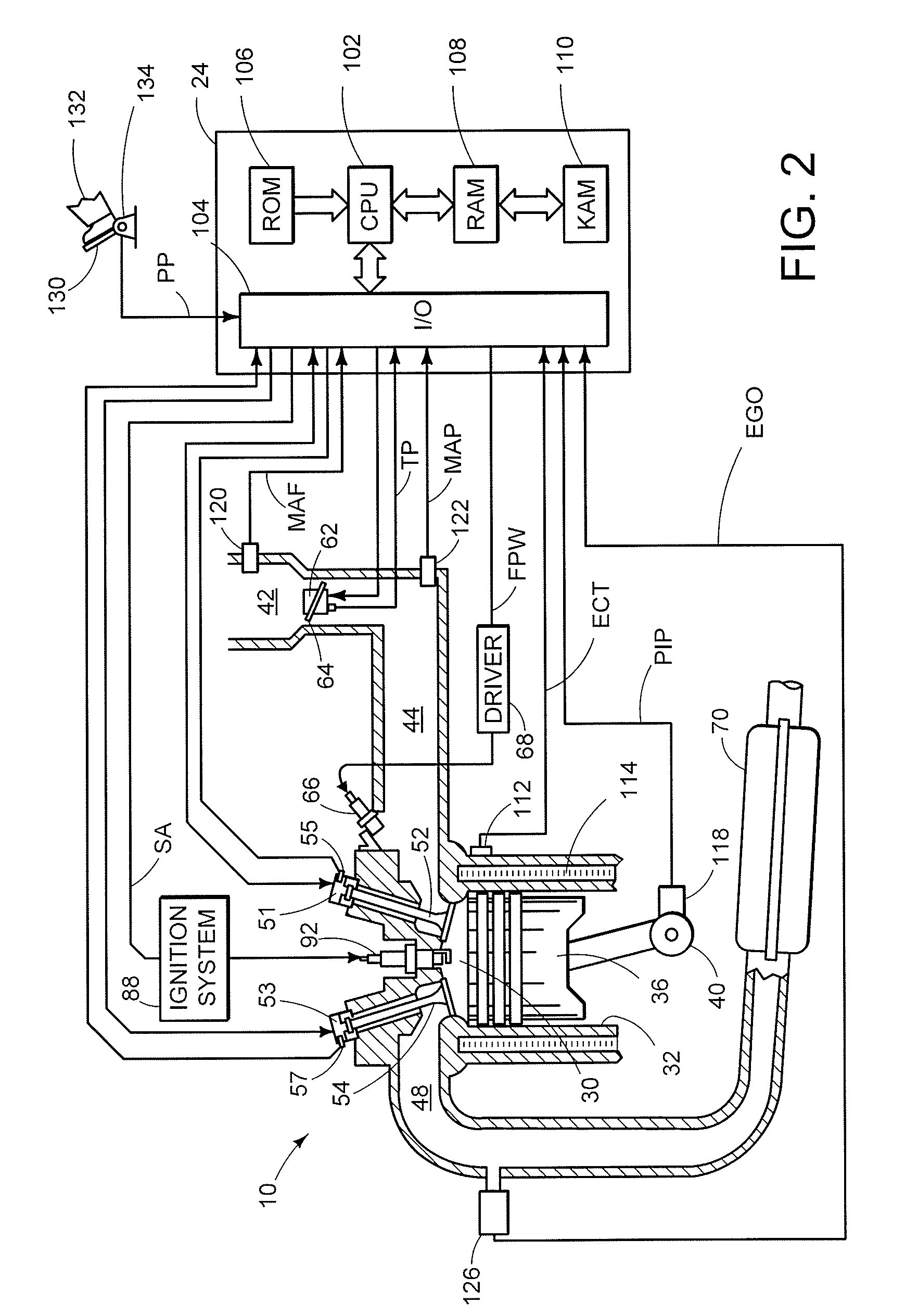System and method of extending regenerative braking in a hybrid electric vehicle
a hybrid electric vehicle and regenerative braking technology, applied in the direction of engine-driven generators, machines/engines, propulsion using engine-driven generators, etc., can solve the problems of objectionable switching and additional wear, and achieve the effect of reducing mechanical wheel brake wear, capturing and storing energy, and increasing the state of charge of batteries
- Summary
- Abstract
- Description
- Claims
- Application Information
AI Technical Summary
Benefits of technology
Problems solved by technology
Method used
Image
Examples
Embodiment Construction
[0010]FIG. 1 illustrates an exemplary embodiment of a hybrid propulsion system for a vehicle. The hybrid propulsion configuration may be used with the disclosed approach for providing improved vehicle braking over an extended duration that maintains a high state of charge of the battery and reduces wear on the mechanical wheel brakes. In this example, the hybrid propulsion system may include an Atkinson cycle internal combustion engine (ICE) 10 having one or more cylinders 30, transmission 14, final drive / wheels 18 or other suitable device for delivering propulsive force to the ground surface, and two electric energy conversion devices 12 and 16. Each of wheels 18 may include wheel brake device 22.
[0011]Electric energy conversion devices 12 and 16 may operate as motors and convert electric energy into output torque. Further, electric energy conversion devices 12 and 16 may operate as generators and convert torque into electric energy. Note that electric energy conversion devices 12 ...
PUM
 Login to View More
Login to View More Abstract
Description
Claims
Application Information
 Login to View More
Login to View More - R&D
- Intellectual Property
- Life Sciences
- Materials
- Tech Scout
- Unparalleled Data Quality
- Higher Quality Content
- 60% Fewer Hallucinations
Browse by: Latest US Patents, China's latest patents, Technical Efficacy Thesaurus, Application Domain, Technology Topic, Popular Technical Reports.
© 2025 PatSnap. All rights reserved.Legal|Privacy policy|Modern Slavery Act Transparency Statement|Sitemap|About US| Contact US: help@patsnap.com



